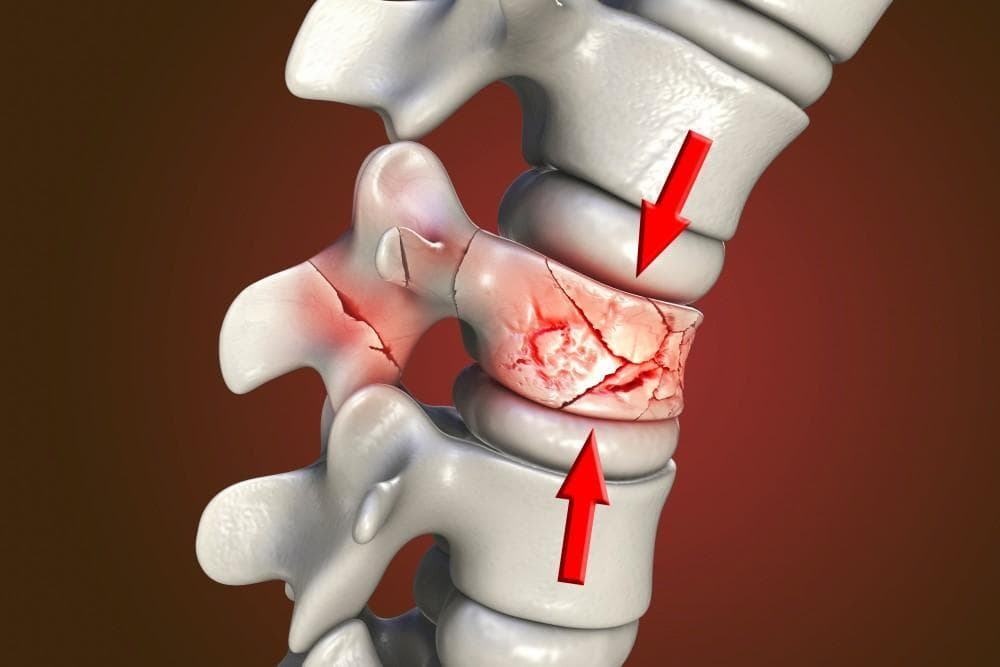A vertebral compression fracture is a type of broken bone in the spine where one or more vertebrae collapse, becoming shorter in height. This typically occurs when the body of the vertebra is compressed, often into a wedge shape.

Compression Fractures
Overview
Causes
The most common cause of compression fractures is osteoporosis, a disease that weakens bones and makes them brittle. In people with severe osteoporosis, a VCF can happen from everyday activities like bending over, lifting something, or falling. In younger individuals, these injuries come from higher energy trauma such as a car accident or a fall from a height. Rarely a tumor can weaken the bone, leading to the fracture.
Symptoms
Compression fracture symptoms can range from no pain at all to severe, debilitating back pain. Generally, the pain will worsen with standing and improve with lying down. There is usually tenderness along the spine at the level of the fracture.
Non-Surgical Treatment
-
Rest and pain management with medications like over-the-counter pain relievers are the first line of treatment. In some cases, prescription narcotics are used. You should never use oral steroids to treat this pain as they hinder bone healing and worsen osteoporosis. Additionally, physical therapy to help strengthen the back muscles and improve mobility can be started. A patient can also wear a back brace, such as a Jewett brace, to provide support and limit movement while the bone heals. Medications to treat the underlying cause of osteoporosis are important.
-
Most people with compression fractures heal within a few months, especially with proper treatment and management. However, it's crucial to address the underlying cause to prevent future fractures.
Surgical Treatment
When the fracture fails to heal after an appropriate amount of time or the pain is too debilitating to function, a patient may consider stabilizing the bone with a procedure called kyphoplasty.